Find The Best Scaffolding Rental Companies On ScaffoldingHQ
Rent Scaffolding Easily
ScaffoldingHQ connects you with vetted scaffolding rental companies for any project size. Get free quotes, compare rental rates, and find the perfect scaffolding solution in the UK. Whether you need scaffolding for commercial or industrial projects, we've got you covered.
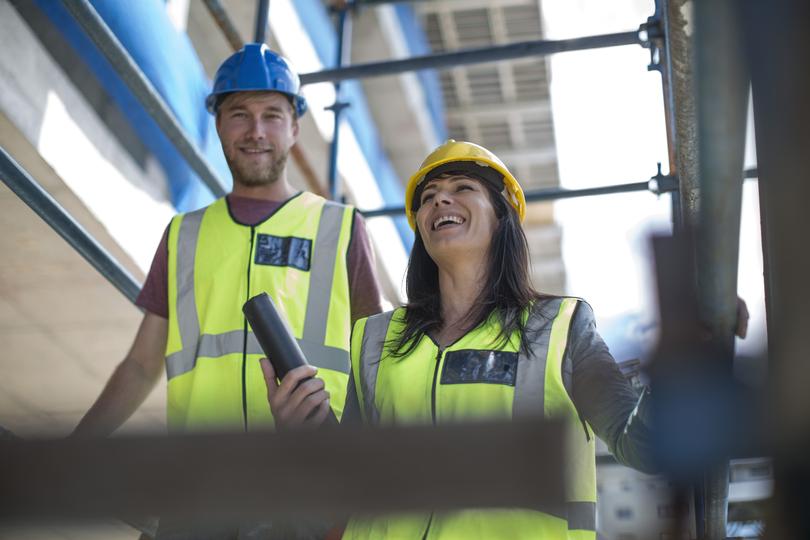
Scaffolding Rental Near Me
Looking for scaffolding rentals in a specific location? Browse our directory to find scaffolding providers near you across the UK.
Renting Scaffolding Is Easy With ScaffoldingHQ
We make it simple to find and rent scaffolding from reputable companies across the UK.
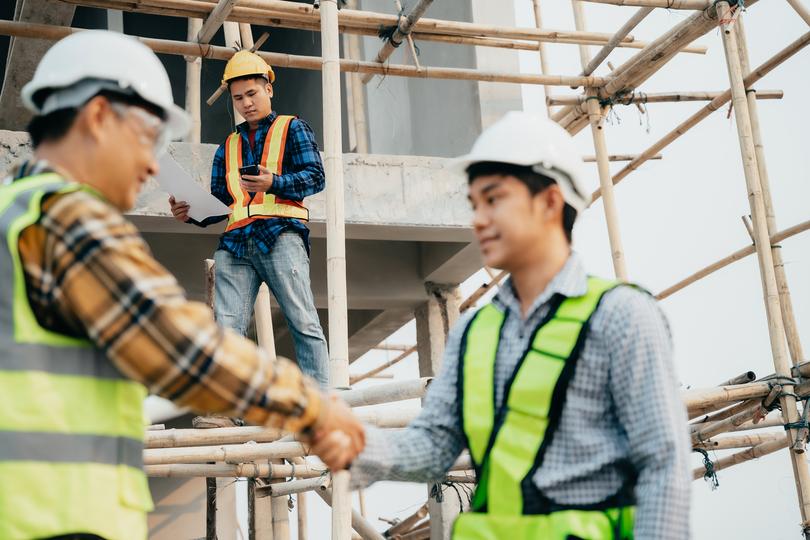
- Tell Us About Your Project
- Describe your scaffolding requirements, including the project type, location, desired scaffolding type, duration of rental, and any special needs.
- We Connect You With Rental Providers
- We'll match you with trusted scaffolding rental companies in your area who can meet your specific requirements.
- Compare Quotes & Choose The Best Option
- Review quotes from multiple rental companies, compare their rates, rental terms, and available scaffolding equipment. We provide the information you need to make an informed choice.
- Get Your Scaffolding Delivered
- Your chosen scaffolding rental company will handle the delivery, setup (if needed), and collection of the equipment, making the process hassle-free.
Why Choose ScaffoldingHQ for Your Scaffolding Rental Needs?
Why Choose ScaffoldingHQ for Your Scaffolding Needs?
Renting scaffolding through ScaffoldingHQ is the smart choice. Here's why: We make it easy to find and compare qualified scaffolding providers in your area. Here's how:
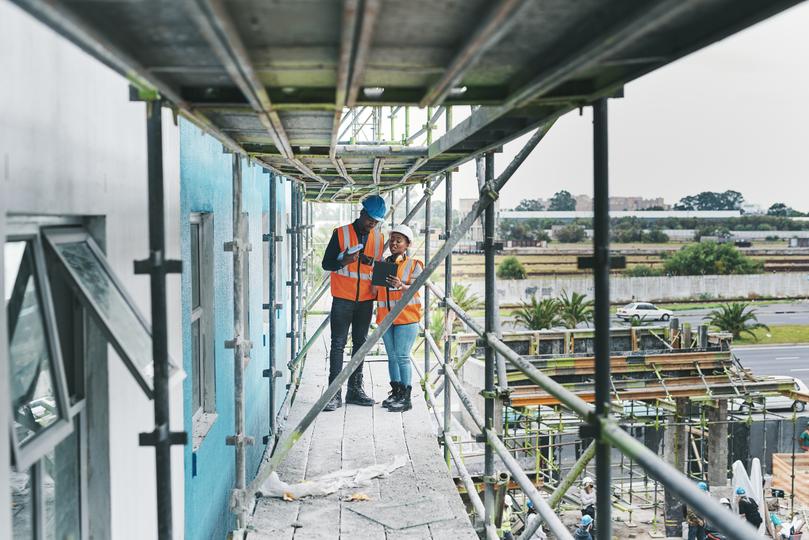
- Wide Selection of Equipment
- We partner with rental companies that offer a diverse range of scaffolding types and equipment, including tube and clamp, system scaffolding, mobile towers, and specialized access solutions. You'll find the right scaffolding for any project.
- Competitive Pricing
- Compare rental rates from multiple companies to ensure you're getting the best deal. Our platform makes it easy to find affordable scaffolding rentals.
- Reliable Rental Companies
- We only work with reputable scaffolding rental companies that prioritize safety and customer satisfaction. You can trust our network of providers.
- Flexible Rental Terms
- Whether you need scaffolding for a short-term project or an extended period, our rental partners offer flexible rental terms to suit your needs.
- Easy Online Booking
- Requesting quotes and comparing rental options is quick and easy on our platform. Save time and effort by finding the perfect scaffolding rental online.
- Expert Support
- Our dedicated customer support team is here to assist you with any questions or concerns you may have throughout the rental process.
Scaffolding Solutions for Your Business
Commercial Scaffolding Rental
ScaffoldingHQ provides scaffolding rental solutions for various commercial projects:
We offer a range of scaffolding types and sizes to meet the demands of commercial projects, ensuring safety and efficiency.

Need scaffolding for a short-term project? Find reliable scaffolding rental companies near you and get competitive rates.

Scale your commercial construction projects safely and efficiently. Find experienced commercial scaffolding providers on our directory.
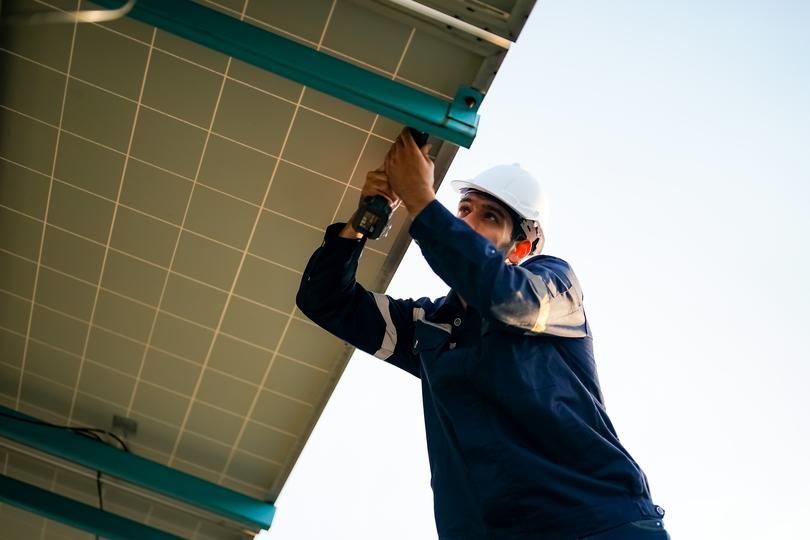
Add style and protection to your property. Find expert canopy installers for residential and commercial projects on our directory.
Scaffolding for Home Projects
Residential Scaffolding Rental
ScaffoldingHQ helps homeowners with their scaffolding needs for various projects:
We offer a variety of scaffolding options to suit residential projects, ensuring safety and convenience.
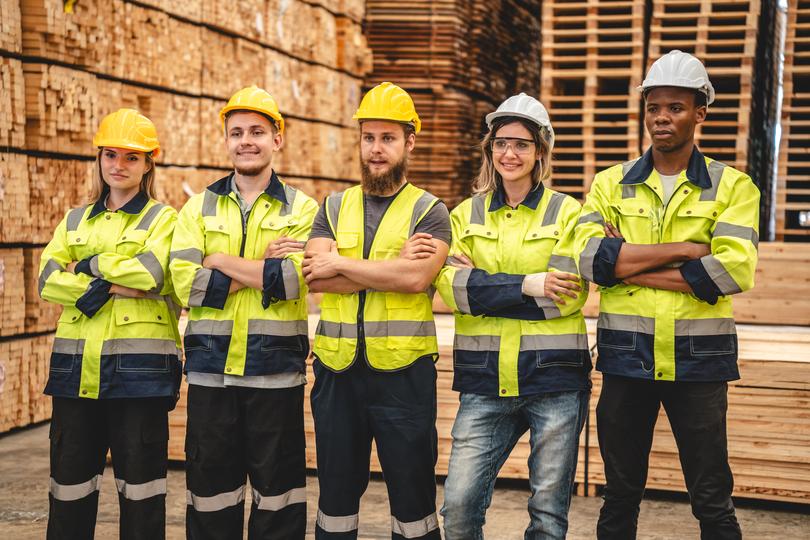
Find trusted scaffolding companies near you. Get quotes for scaffolding erection, dismantling, and rental services.

Need scaffolding for a short-term project? Find reliable scaffolding rental companies near you and get competitive rates.

Add style and protection to your property. Find expert canopy installers for residential and commercial projects on our directory.
Need Scaffolding for Your Next Project?
Find The Best Scaffolding Rental Companies on ScaffoldingHQ!
Get free quotes, compare rates, and rent scaffolding from trusted providers in the UK.
Scaffolding Rental Glossary
Scaffolding
Tube and Clamp Scaffolding
System Scaffolding
Mobile Scaffolding
Rolling Tower
Scaffolding Deck
Guardrail
Toeboard
Scaffolding Tag
Scaffolding Inspection
Scaffolding Erectors
Rental Agreement
Delivery and Collection
Scaffolding Components
Scaffolding Standards
Frequently Asked Questions About Scaffolding Rental
How much does it cost to rent scaffolding?
- Type of Scaffolding: Tube and clamp, system scaffolding, mobile towers, and specialized systems have different rental rates.
- Scaffolding Size and Height: Larger and taller scaffolding structures require more materials, increasing the cost.
- Rental Duration: The length of the rental period will significantly affect the price.
- Location: Rental rates can vary by location due to differences in labor costs and demand.
- Delivery and Setup: Some companies charge extra for delivery, erection, and dismantling services.
How long can you rent scaffolding for?
- Daily: For short-term tasks or smaller projects.
- Weekly: A common option for projects lasting a few days to a week.
- Monthly: Suitable for larger or longer-term projects.
- Custom Duration: Some companies may offer custom rental periods to fit your specific timeframe.
What is the difference between renting and buying scaffolding?
Renting Scaffolding:
- Cost-Effective for Short-Term Projects: Renting is generally more affordable for projects that don't require scaffolding for an extended period.
- No Storage or Maintenance Costs: You don't have to worry about storing or maintaining the scaffolding after your project.
- Access to a Variety of Equipment: Rental companies offer a wide selection of scaffolding types and sizes, allowing you to choose the best fit for your project.
- Long-Term Investment: Buying makes sense if you anticipate frequent scaffolding needs over a long period.
- Customization: You can customize the scaffolding to fit your specific requirements.
- Potential Resale Value: You can potentially resell the scaffolding after you no longer need it.
What type of scaffolding is best for home use?
- Small Repairs or Painting: A rolling tower or mobile scaffolding is often sufficient for smaller projects, providing a stable platform at lower heights.
- Roof Work: Roofing projects typically require taller and more robust scaffolding, like tube and clamp or system scaffolding.
- Two-Story Homes: For accessing higher levels of a two-story home, you may need a larger system scaffolding structure.
- Limited Access: If space is restricted, consider a narrow-width scaffolding tower or suspended scaffolding.
Do I need insurance to rent scaffolding?
- General Liability Insurance: Provides coverage if someone is injured or property is damaged due to your use of the scaffolding.
- Worker's Compensation Insurance (if you have employees): Covers medical expenses and lost wages for employees injured while working on the scaffolding.
What should I check for when the scaffolding is delivered?
- All Components: Ensure all the necessary components (tubes, clamps, boards, braces, etc.) are present and in good condition.
- Damage or Defects: Look for any signs of damage, rust, or defects on the scaffolding parts.
- Scaffolding Tag: Verify that the scaffolding tag is up-to-date and shows the last inspection date.
- Safety Features: Check that guardrails, toeboards, and other safety features are included and in working order.
Who is responsible for erecting and dismantling the scaffolding?
- If the Rental Company Handles Erection/Dismantling: Ensure they are licensed and insured to perform this work.
- If You Hire a Separate Contractor: Verify their qualifications and insurance. The scaffolding company might have recommendations for reputable erectors.
What are the safety precautions when working on scaffolding?
- Wear a Safety Harness: Always wear a properly fitted safety harness and secure it to a designated anchor point on the scaffolding.
- Inspect Before Use: Check for any damage or loose components before each use.
- Keep the Platform Clear: Remove tools, materials, and debris to prevent tripping hazards.
- Never Overload the Scaffolding: Stay within the maximum load capacity indicated on the scaffolding tag.
- Be Weather Aware: Avoid working on scaffolding during high winds, storms, or icy conditions.
- Use Proper Access: Use designated ladders or stairs to access and exit the scaffolding platform.
- Follow Training: Ensure all workers on the scaffolding have received proper safety training.
Can I modify or alter the scaffolding after it's erected?
What happens if the scaffolding is damaged during my rental period?
- Stop Using It Immediately: Do not attempt to use damaged scaffolding. It could be unsafe.
- Contact the Rental Company: Notify the scaffolding rental company about the damage as soon as possible.
- Document the Damage: Take photos or videos of the damage for documentation. The rental agreement should outline the procedures for handling damaged equipment. You may be responsible for repair or replacement costs, depending on the circumstances and the terms of the agreement.
What are some common uses for scaffolding rentals?
- Residential: Roofing repairs and replacements, siding installations, painting projects, window replacements, gutter cleaning and repairs, chimney repairs, solar panel installations.
- Commercial: Building construction and renovations, facade repairs and cleaning, window cleaning, painting, sign installation, and maintenance of high-rise structures.
- Industrial: Plant maintenance, access to elevated equipment, tank inspections and repairs, bridge repairs, and other industrial construction projects.
- Events: Temporary stages, grandstands, lighting and sound rigging, and platforms for concerts, festivals, and sporting events.
How do I know what size scaffolding I need?
- Working Height: Measure the height of the area you need to access, adding a safety margin for guardrails.
- Project Scope: Consider the tasks you'll be performing on the scaffolding and the space required for workers, materials, and equipment.
- Site Access and Constraints: Evaluate the available space for erecting the scaffolding and any obstacles (trees, structures, utilities) that might restrict size.
What is the maximum height of scaffolding?
Can I use scaffolding on uneven ground?
- Base Plates and Adjusters: Use adjustable base plates to level the scaffolding legs on uneven surfaces.
- Ground Preparation: Level the ground as much as possible before erection.
- Bracing and Support: Additional bracing and support may be necessary to compensate for uneven ground conditions.
- Professional Assessment: A qualified scaffolding erector should assess the ground and determine the appropriate measures for safe erection.
What are some tips for storing scaffolding?
- Clean and Dry: Clean the scaffolding components thoroughly and allow them to dry completely before storage.
- Rust Prevention: Apply a rust inhibitor to metal components, especially if they will be stored outdoors.
- Organized and Labeled: Store components in an organized manner, labeling them clearly for easy identification.
- Covered Storage: Store scaffolding in a dry, covered area, protected from the elements.
- Off the Ground: Elevate the scaffolding components off the ground using pallets or racks to prevent moisture damage.
How do I get a permit for scaffolding?
- Contact Your Local Authority: Start by contacting your local council or planning authority.
- Provide Project Details: Be prepared to provide details about the scaffolding (size, location, duration), the project, and any relevant drawings or plans.
- Application and Fees: Complete a permit application form and pay any associated fees.
- Inspection: An inspector may visit the site to verify the scaffolding plans and safety measures. The scaffolding rental company or the erector may be able to assist you with the permit application process.
What are some common mistakes to avoid when renting scaffolding?
- Underestimating Scaffolding Needs: Accurately assess the required scaffolding size and type.
- Not Comparing Quotes: Get quotes from multiple rental companies to find the best deal.
- Ignoring Safety: Prioritize safety by hiring qualified erectors and ensuring workers follow safety protocols.
- Overlooking Permits: Obtain any necessary permits before erecting scaffolding.
- Not Inspecting the Scaffolding: Carefully inspect the scaffolding upon delivery and before each use.
- Modifying Scaffolding without Authorization: Never alter the scaffolding without consulting the rental company or an engineer.
What is the difference between single and double scaffolding?
Single Scaffolding:
- Has a single working platform, typically about 60-70cm wide.
- Suitable for tasks where limited space is available.
- Has a wider working platform, usually about 1.3-1.4 meters wide.
- Provides more working space and stability, allowing for movement of materials and multiple workers.
What are the benefits of using a scaffolding directory like ScaffoldingHQ?
- Save Time: Easily compare quotes from multiple reputable scaffolding rental companies in one place.
- Find Local Providers: Quickly locate scaffolding companies serving your area.
- Get Competitive Rates: Access a network of rental providers, allowing you to compare prices and find the best deal.
- Ensure Safety and Quality: We partner with companies that prioritize safety and adhere to industry standards.
- Access Expert Support: Our customer support team is here to assist you throughout the rental process.
What are some common scaffolding accessories?
- Scaffolding Boards: Wooden planks or metal grating that form the working platform.
- Base Plates: Provide a stable foundation for scaffolding legs, often adjustable to accommodate uneven ground.
- Ladder Access: Ladders or stairs allow safe access to and from the scaffolding platform.
- Castors (Wheels): Used for mobile scaffolding, allowing for easy movement.
- Braces and Ties: Strengthen and stabilize the scaffolding structure.
- Safety Nets: Catch falling objects and prevent debris from reaching the ground.
- Weather Protection: Screens or covers protect workers from wind, rain, or sun.
What are some things to consider when choosing a scaffolding rental company?
- Reputation and Experience: Look for a company with a good track record and a history of satisfied customers.
- Licensing and Insurance: Ensure they have the proper licenses and insurance coverage to protect you from liability.
- Safety Practices: Inquire about their safety policies, training programs, and inspection procedures.
- Equipment Availability and Quality: Confirm they have the type of scaffolding you need and that it's in good condition.
- Pricing and Rental Terms: Compare quotes and assess the rental rates, duration, and any additional fees.
- Customer Service: Choose a company that is responsive, communicative, and helpful.
What are the weight limits for different types of scaffolding?
- Tube and Clamp: Capacity depends on the configuration and the strength of the components.
- System Scaffolding: Typically has higher load capacities due to its pre-engineered design.
- Mobile Towers: Have specific weight limits based on their size and model.
What is scaffolding used for?
- Construction: Building new structures, adding extensions, and performing facade work.
- Renovation and Repair: Repairing or replacing roofs, siding, windows, and gutters.
- Maintenance: Cleaning windows, painting, and performing general upkeep on buildings.
- Industrial Work: Accessing elevated equipment, performing inspections and repairs on industrial structures, and carrying out construction work in industrial settings.
- Events: Creating temporary stages, grandstands, and platforms for concerts, festivals, and sporting events.
How do I find scaffolding rental companies near me?
- Online Directories: ScaffoldingHQ is a specialized directory that connects you with reputable rental providers.
- Search Engines: Search for 'scaffolding rental [your location]' on Google or other search engines.
- Local Business Listings: Check local business listings, such as Yelp or Yellow Pages, for scaffolding rental companies.
- Word-of-Mouth Referrals: Ask contractors, builders, or friends for recommendations.
How much does it cost to rent scaffolding?
- Type of Scaffolding: Tube and clamp, system scaffolding, mobile towers, and specialized systems have different rental rates.
- Scaffolding Size and Height: Larger and taller scaffolding structures require more materials, increasing the cost.
- Rental Duration: The length of the rental period will significantly affect the price.
- Location: Rental rates can vary by location due to differences in labor costs and demand.
- Delivery and Setup: Some companies charge extra for delivery, erection, and dismantling services.
How long can you rent scaffolding for?
- Daily: For short-term tasks or smaller projects.
- Weekly: A common option for projects lasting a few days to a week.
- Monthly: Suitable for larger or longer-term projects.
- Custom Duration: Some companies may offer custom rental periods to fit your specific timeframe.
What is the difference between renting and buying scaffolding?
Renting Scaffolding:
- Cost-Effective for Short-Term Projects: Renting is generally more affordable for projects that don't require scaffolding for an extended period.
- No Storage or Maintenance Costs: You don't have to worry about storing or maintaining the scaffolding after your project.
- Access to a Variety of Equipment: Rental companies offer a wide selection of scaffolding types and sizes, allowing you to choose the best fit for your project.
- Long-Term Investment: Buying makes sense if you anticipate frequent scaffolding needs over a long period.
- Customization: You can customize the scaffolding to fit your specific requirements.
- Potential Resale Value: You can potentially resell the scaffolding after you no longer need it.
What type of scaffolding is best for home use?
- Small Repairs or Painting: A rolling tower or mobile scaffolding is often sufficient for smaller projects, providing a stable platform at lower heights.
- Roof Work: Roofing projects typically require taller and more robust scaffolding, like tube and clamp or system scaffolding.
- Two-Story Homes: For accessing higher levels of a two-story home, you may need a larger system scaffolding structure.
- Limited Access: If space is restricted, consider a narrow-width scaffolding tower or suspended scaffolding.
Do I need insurance to rent scaffolding?
- General Liability Insurance: Provides coverage if someone is injured or property is damaged due to your use of the scaffolding.
- Worker's Compensation Insurance (if you have employees): Covers medical expenses and lost wages for employees injured while working on the scaffolding.
What should I check for when the scaffolding is delivered?
- All Components: Ensure all the necessary components (tubes, clamps, boards, braces, etc.) are present and in good condition.
- Damage or Defects: Look for any signs of damage, rust, or defects on the scaffolding parts.
- Scaffolding Tag: Verify that the scaffolding tag is up-to-date and shows the last inspection date.
- Safety Features: Check that guardrails, toeboards, and other safety features are included and in working order.
Who is responsible for erecting and dismantling the scaffolding?
- If the Rental Company Handles Erection/Dismantling: Ensure they are licensed and insured to perform this work.
- If You Hire a Separate Contractor: Verify their qualifications and insurance. The scaffolding company might have recommendations for reputable erectors.
What are the safety precautions when working on scaffolding?
- Wear a Safety Harness: Always wear a properly fitted safety harness and secure it to a designated anchor point on the scaffolding.
- Inspect Before Use: Check for any damage or loose components before each use.
- Keep the Platform Clear: Remove tools, materials, and debris to prevent tripping hazards.
- Never Overload the Scaffolding: Stay within the maximum load capacity indicated on the scaffolding tag.
- Be Weather Aware: Avoid working on scaffolding during high winds, storms, or icy conditions.
- Use Proper Access: Use designated ladders or stairs to access and exit the scaffolding platform.
- Follow Training: Ensure all workers on the scaffolding have received proper safety training.
Can I modify or alter the scaffolding after it's erected?
What happens if the scaffolding is damaged during my rental period?
- Stop Using It Immediately: Do not attempt to use damaged scaffolding. It could be unsafe.
- Contact the Rental Company: Notify the scaffolding rental company about the damage as soon as possible.
- Document the Damage: Take photos or videos of the damage for documentation. The rental agreement should outline the procedures for handling damaged equipment. You may be responsible for repair or replacement costs, depending on the circumstances and the terms of the agreement.
What are some common uses for scaffolding rentals?
- Residential: Roofing repairs and replacements, siding installations, painting projects, window replacements, gutter cleaning and repairs, chimney repairs, solar panel installations.
- Commercial: Building construction and renovations, facade repairs and cleaning, window cleaning, painting, sign installation, and maintenance of high-rise structures.
- Industrial: Plant maintenance, access to elevated equipment, tank inspections and repairs, bridge repairs, and other industrial construction projects.
- Events: Temporary stages, grandstands, lighting and sound rigging, and platforms for concerts, festivals, and sporting events.
How do I know what size scaffolding I need?
- Working Height: Measure the height of the area you need to access, adding a safety margin for guardrails.
- Project Scope: Consider the tasks you'll be performing on the scaffolding and the space required for workers, materials, and equipment.
- Site Access and Constraints: Evaluate the available space for erecting the scaffolding and any obstacles (trees, structures, utilities) that might restrict size.
What is the maximum height of scaffolding?
Can I use scaffolding on uneven ground?
- Base Plates and Adjusters: Use adjustable base plates to level the scaffolding legs on uneven surfaces.
- Ground Preparation: Level the ground as much as possible before erection.
- Bracing and Support: Additional bracing and support may be necessary to compensate for uneven ground conditions.
- Professional Assessment: A qualified scaffolding erector should assess the ground and determine the appropriate measures for safe erection.
What are some tips for storing scaffolding?
- Clean and Dry: Clean the scaffolding components thoroughly and allow them to dry completely before storage.
- Rust Prevention: Apply a rust inhibitor to metal components, especially if they will be stored outdoors.
- Organized and Labeled: Store components in an organized manner, labeling them clearly for easy identification.
- Covered Storage: Store scaffolding in a dry, covered area, protected from the elements.
- Off the Ground: Elevate the scaffolding components off the ground using pallets or racks to prevent moisture damage.
How do I get a permit for scaffolding?
- Contact Your Local Authority: Start by contacting your local council or planning authority.
- Provide Project Details: Be prepared to provide details about the scaffolding (size, location, duration), the project, and any relevant drawings or plans.
- Application and Fees: Complete a permit application form and pay any associated fees.
- Inspection: An inspector may visit the site to verify the scaffolding plans and safety measures. The scaffolding rental company or the erector may be able to assist you with the permit application process.
What are some common mistakes to avoid when renting scaffolding?
- Underestimating Scaffolding Needs: Accurately assess the required scaffolding size and type.
- Not Comparing Quotes: Get quotes from multiple rental companies to find the best deal.
- Ignoring Safety: Prioritize safety by hiring qualified erectors and ensuring workers follow safety protocols.
- Overlooking Permits: Obtain any necessary permits before erecting scaffolding.
- Not Inspecting the Scaffolding: Carefully inspect the scaffolding upon delivery and before each use.
- Modifying Scaffolding without Authorization: Never alter the scaffolding without consulting the rental company or an engineer.
What is the difference between single and double scaffolding?
Single Scaffolding:
- Has a single working platform, typically about 60-70cm wide.
- Suitable for tasks where limited space is available.
- Has a wider working platform, usually about 1.3-1.4 meters wide.
- Provides more working space and stability, allowing for movement of materials and multiple workers.
What are the benefits of using a scaffolding directory like ScaffoldingHQ?
- Save Time: Easily compare quotes from multiple reputable scaffolding rental companies in one place.
- Find Local Providers: Quickly locate scaffolding companies serving your area.
- Get Competitive Rates: Access a network of rental providers, allowing you to compare prices and find the best deal.
- Ensure Safety and Quality: We partner with companies that prioritize safety and adhere to industry standards.
- Access Expert Support: Our customer support team is here to assist you throughout the rental process.
What are some common scaffolding accessories?
- Scaffolding Boards: Wooden planks or metal grating that form the working platform.
- Base Plates: Provide a stable foundation for scaffolding legs, often adjustable to accommodate uneven ground.
- Ladder Access: Ladders or stairs allow safe access to and from the scaffolding platform.
- Castors (Wheels): Used for mobile scaffolding, allowing for easy movement.
- Braces and Ties: Strengthen and stabilize the scaffolding structure.
- Safety Nets: Catch falling objects and prevent debris from reaching the ground.
- Weather Protection: Screens or covers protect workers from wind, rain, or sun.
What are some things to consider when choosing a scaffolding rental company?
- Reputation and Experience: Look for a company with a good track record and a history of satisfied customers.
- Licensing and Insurance: Ensure they have the proper licenses and insurance coverage to protect you from liability.
- Safety Practices: Inquire about their safety policies, training programs, and inspection procedures.
- Equipment Availability and Quality: Confirm they have the type of scaffolding you need and that it's in good condition.
- Pricing and Rental Terms: Compare quotes and assess the rental rates, duration, and any additional fees.
- Customer Service: Choose a company that is responsive, communicative, and helpful.
What are the weight limits for different types of scaffolding?
- Tube and Clamp: Capacity depends on the configuration and the strength of the components.
- System Scaffolding: Typically has higher load capacities due to its pre-engineered design.
- Mobile Towers: Have specific weight limits based on their size and model.
What is scaffolding used for?
- Construction: Building new structures, adding extensions, and performing facade work.
- Renovation and Repair: Repairing or replacing roofs, siding, windows, and gutters.
- Maintenance: Cleaning windows, painting, and performing general upkeep on buildings.
- Industrial Work: Accessing elevated equipment, performing inspections and repairs on industrial structures, and carrying out construction work in industrial settings.
- Events: Creating temporary stages, grandstands, and platforms for concerts, festivals, and sporting events.
How do I find scaffolding rental companies near me?
- Online Directories: ScaffoldingHQ is a specialized directory that connects you with reputable rental providers.
- Search Engines: Search for 'scaffolding rental [your location]' on Google or other search engines.
- Local Business Listings: Check local business listings, such as Yelp or Yellow Pages, for scaffolding rental companies.
- Word-of-Mouth Referrals: Ask contractors, builders, or friends for recommendations.